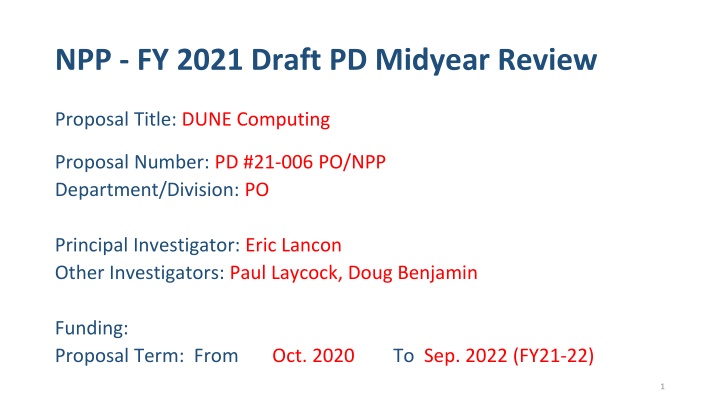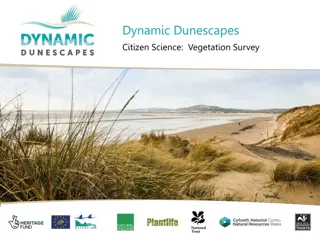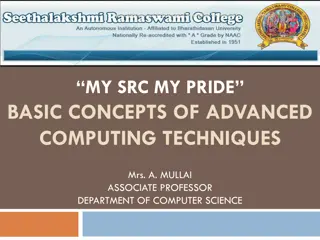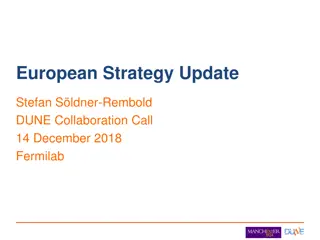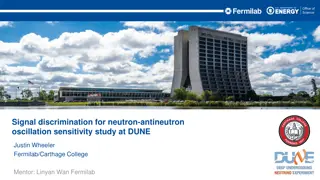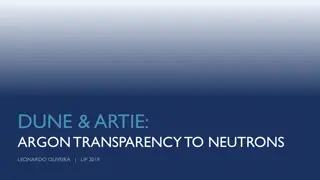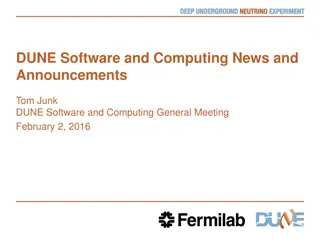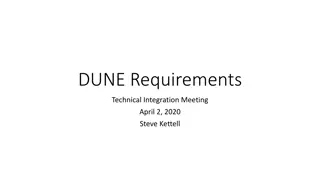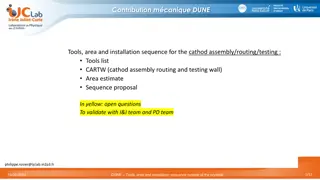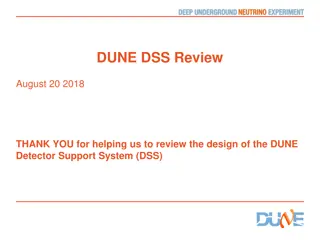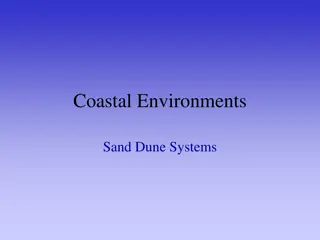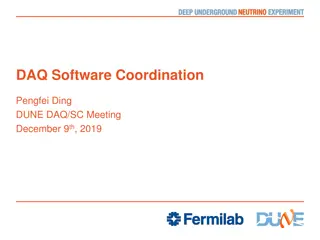Enhancing Computing Capabilities for DUNE Collaboration
Strengthening the collaboration between BNL and FNAL through advanced computing models led by senior experts. Focus on addressing raw data processing challenges, fostering a federated approach, and optimizing research efforts in the field of particle physics. Doug Benjamin's appointment at BNL has already initiated significant progress in bridging computing resources and enhancing communication channels among key project stakeholders.
Download Presentation

Please find below an Image/Link to download the presentation.
The content on the website is provided AS IS for your information and personal use only. It may not be sold, licensed, or shared on other websites without obtaining consent from the author.If you encounter any issues during the download, it is possible that the publisher has removed the file from their server.
You are allowed to download the files provided on this website for personal or commercial use, subject to the condition that they are used lawfully. All files are the property of their respective owners.
The content on the website is provided AS IS for your information and personal use only. It may not be sold, licensed, or shared on other websites without obtaining consent from the author.
E N D
Presentation Transcript
NPP - FY 2021 Draft PD Midyear Review Proposal Title: DUNE Computing Proposal Number: PD #21-006 PO/NPP Department/Division: PO Principal Investigator: Eric Lancon Other Investigators: Paul Laycock, Doug Benjamin Funding: Proposal Term: From Oct. 2020 To Sep. 2022 (FY21-22) 1
Project goals Strengthen relation between BNL and FNAL, steer the computing model with involvement of senior expert from BNL Highlight raw data processing challenges presented by supernovae and calibrations and the need to avoid a single point of failure Leverage existing expertise in SDCC, aligned with strategic plan for similar work on EIC/JLab Position BNL to drive federation of computing at DOE labs Work on federated storage and federated identity with FNAL Leverage Rucio development expertise in Belle II from BNL to integrate federated storage into proto-DUNE II computing 2
Project strategy Use a senior computing professional in SDCC at 0.5 FTE effort to Lead federation of BNL and FNAL Offer expertise to DUNE Support existing DUNE effort in NPP Federation of labs makes it more likely for hardware to come to BNL as the resources can be seamlessly used by DUNE It also opens the possibility for BNL computing professionals to have computing operations roles regardless of hardware location Offer expertise to strengthen the BNL-FNAL relationship and add value BNL will help FNAL with bursts of compute needed for supernovae and calibrations Support existing effort to optimise BNL research in DUNE Particularly LArTPC reconstruction and simulation software developed in EDG 3
Project accomplishments Hired a new senior computing professional in SDCC, with 0.5 FTE effort on DUNE Doug Benjamin joined BNL in March 2021 and started on the project in April 2021 Immediately started to identify needs gaps in DUNE computing Started federation of computing resources First step in progress to allow DUNE collaborators to use FNAL resource from BNL Next step is to enable the other direction Established good communication between SDCC, NPPS and EDG members Will evolve from ad hoc meetings to regular meetings Identified clear specialised computing needs for LArTPC software, particularly for hybrid computing (mixing GPUs with CPUs) This will also improve BNL position to win competitive grants in computing and software areas, particularly AI/ML 4
Next steps - timeline Continue federation of BNL and FNAL computing resources Integrate SDCC HPC cluster to support hybrid computing (CPU/GPU) needs of DUNE, enabling usage of DOE leadership HPCs Optimise NPP physics efforts in LArTPC software requiring hybrid computing, leveraging expertise in SDCC and CSI Guide the DUNE Computing Model, leveraging BNL expertise in distributed computing to enable key aspects Storage-less computing and HPCs DUNE Computing CDR : before the end of 2021 Define DUNE Computing Model Proto-DUNE II: 2022 The DUNE computing model is being tested with Proto-DUNE I data, BNL is now in a better position to play a leading role in those tests 5
Return on investment Program: HEP Return on Investment The potential is very large Aim at ~25% of US contribution to DUNE computing at BNL: ~$5M/y for at least 15 years Return on investment ~300 This project is aligned with strategic plans to expand data intensive computing capabilities at BNL. Total Effort (FTE) High level Information Technology expert : 0.5 FTE/y over FY21-22 6
